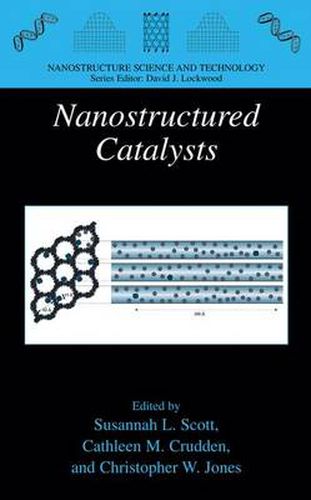Readings Newsletter
Become a Readings Member to make your shopping experience even easier.
Sign in or sign up for free!
You’re not far away from qualifying for FREE standard shipping within Australia
You’ve qualified for FREE standard shipping within Australia
The cart is loading…






This title is printed to order. This book may have been self-published. If so, we cannot guarantee the quality of the content. In the main most books will have gone through the editing process however some may not. We therefore suggest that you be aware of this before ordering this book. If in doubt check either the author or publisher’s details as we are unable to accept any returns unless they are faulty. Please contact us if you have any questions.
With the recent advent of nanotechnology, research and development in the area of nanostructured catalysts has gained unprecedented prominence. Novel materials with potentially exciting new applications in catalysis are being discovered at a much higher rate than ever before. Innovative tools to fabricate, manipulate, characterize, and evaluate such materials are being developed and expanded. To keep pace with this extremely rapid growth, it is necessary to take a breath from time to time, to critically assess the current knowledge and provide thoughts for future developments. This book represents one of these moments, as a number of prominent scientists in nanostructured catalysts join forces to provide reviews of their areas of expertise; thus, offering an overall picture of the state-of-the art of the field. In general, nanostructured catalysts have modified surfaces, including materials whose surfaces have been altered via such techniques as grafting and tethering of organic or organometallic species, or through various deposition procedures including electro, electroless, and vapor deposition, or simple adsorption. Materials with designed regular pore systems, such as zeolites, metallophosphates, periodic mesoporous materials, nanoporous organic, and organometallic materials are also members of the large family of nanostructured materials. These materials are of paramount importance, particularly in catalysis. One of the most distinctive characteristics of this book is the fact that it is all-inclusive, since most of the materials listed above have been dealt with in a concise and informative manner. With 14 up-to-date reports on the design, synthesis, and catalytic properties of nanostructured materials, this book aims to set the stage for things to come in this area.
$9.00 standard shipping within Australia
FREE standard shipping within Australia for orders over $100.00
Express & International shipping calculated at checkout
This title is printed to order. This book may have been self-published. If so, we cannot guarantee the quality of the content. In the main most books will have gone through the editing process however some may not. We therefore suggest that you be aware of this before ordering this book. If in doubt check either the author or publisher’s details as we are unable to accept any returns unless they are faulty. Please contact us if you have any questions.
With the recent advent of nanotechnology, research and development in the area of nanostructured catalysts has gained unprecedented prominence. Novel materials with potentially exciting new applications in catalysis are being discovered at a much higher rate than ever before. Innovative tools to fabricate, manipulate, characterize, and evaluate such materials are being developed and expanded. To keep pace with this extremely rapid growth, it is necessary to take a breath from time to time, to critically assess the current knowledge and provide thoughts for future developments. This book represents one of these moments, as a number of prominent scientists in nanostructured catalysts join forces to provide reviews of their areas of expertise; thus, offering an overall picture of the state-of-the art of the field. In general, nanostructured catalysts have modified surfaces, including materials whose surfaces have been altered via such techniques as grafting and tethering of organic or organometallic species, or through various deposition procedures including electro, electroless, and vapor deposition, or simple adsorption. Materials with designed regular pore systems, such as zeolites, metallophosphates, periodic mesoporous materials, nanoporous organic, and organometallic materials are also members of the large family of nanostructured materials. These materials are of paramount importance, particularly in catalysis. One of the most distinctive characteristics of this book is the fact that it is all-inclusive, since most of the materials listed above have been dealt with in a concise and informative manner. With 14 up-to-date reports on the design, synthesis, and catalytic properties of nanostructured materials, this book aims to set the stage for things to come in this area.